The Very First Pets Ever To Be Photographed
![]()
For nearly as long as there have been cameras, there have been photos of pets, some of which date back to the early 1800s.
Animals are the perfect companion, friend, and as the history of photography shows, photo subject. The advancement of camera and photographic technology is marked by many things, not the least of which is an ever-improving roster of pet portraits.
William Henry Fox Talbot Makes Photo-cat-ic History
Photography pioneer William Henry Fox Talbot changed everything when he invented the negative-positive photo process in 1833. As a polymath in every sense of the word, he frequently reproduced different sorts of images as he dialed in his photographic process.
“How charming it would be if it were possible to cause these natural images to imprint themselves durable and remain fixed upon the paper! And why should it not be possible? I asked myself,” the Englishman wrote in his journal in the early 1830s. And as he proved, it was possible.
One of his earlier photographic reproductions was creating a calotype — or maybe “catotype” — of a detailed cat drawing.
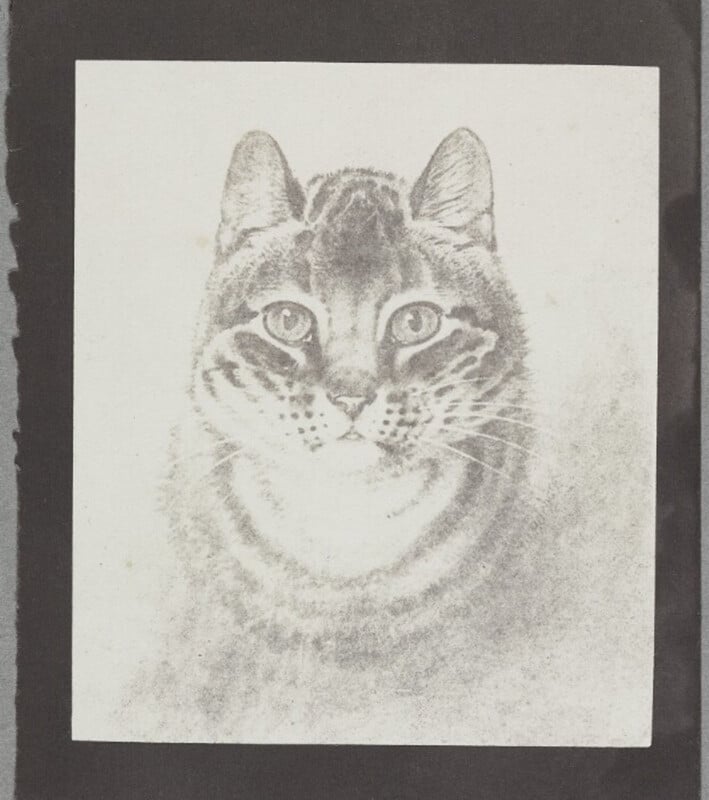
“This cute kitty is believed to be a copy of a favorite cat’ by J.M. Burbank, an artist who exhibited animal pictures during the 1830s in Britain,” explains Ruth Quinn, Curator of Photography and Photographic Technology at the National Science and Media Museum in Bradford, England.
Talbot’s Process Captures Lovely Portrait of a Real Animal
After continually refining his process, Talbot’s photographic technique was introduced into broader society in the 1840s, albeit at a select number of studios. Reserved for the cultural elite, these studios put mostly people to photo paper, but one customer, celebrity author Mary Mitford, brought her dog to her portrait session in 1847.
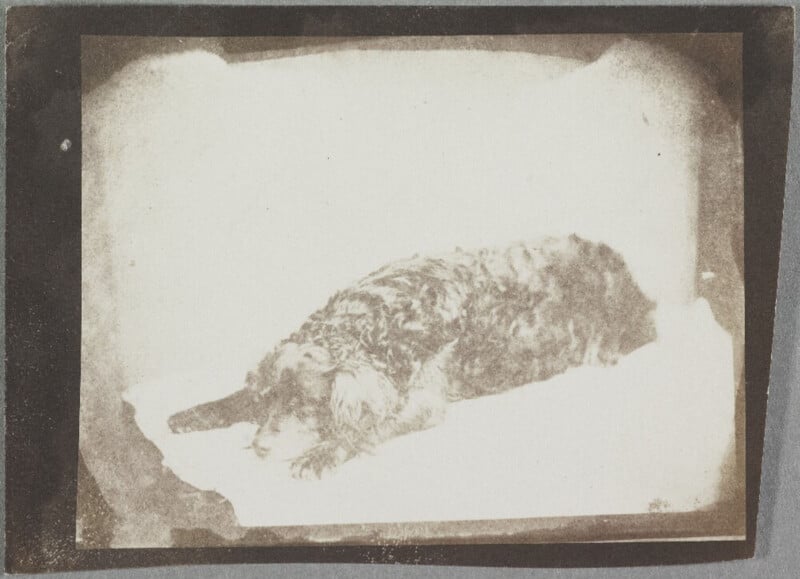
As Quinn explains, Mitford insisted that the studio’s photographer, Nicolaas Henneman, photograph her dog. The photographer was skeptical the dog could sit still long enough — these early photos took minutes to expose. However, the adorable pooch sat perfectly still. Well-behaved? Maybe. Bored senseless? Probably.
Daguerre Joins the Photographic Fray — The First Live Animal Ever Photographed
Talbot wasn’t the only person working on photographic processes, and Miss Mary Mitford’s dog was not the first live animal to be photographed.
Contemporaneously with Talbot, Louis Daguerre was working hard to develop a photographic process in the 1830s. The eponymous “Daguerreotype” was announced in France in 1839. While it relied on materials that would eventually fall out of favor, like mercury vapor, it produced incredibly sharp and detailed photographs. Some of them are remarkably famous, like the first authenticated image ever taken of Abraham Lincoln.
The first photo of an animal could be an 1842 Daguerreotype of a cow. While not specifically a pet, although cows certainly can be great pets, this 182-year-old photo was captured by French photographer Joseph-Philibert Girault de Prangey.
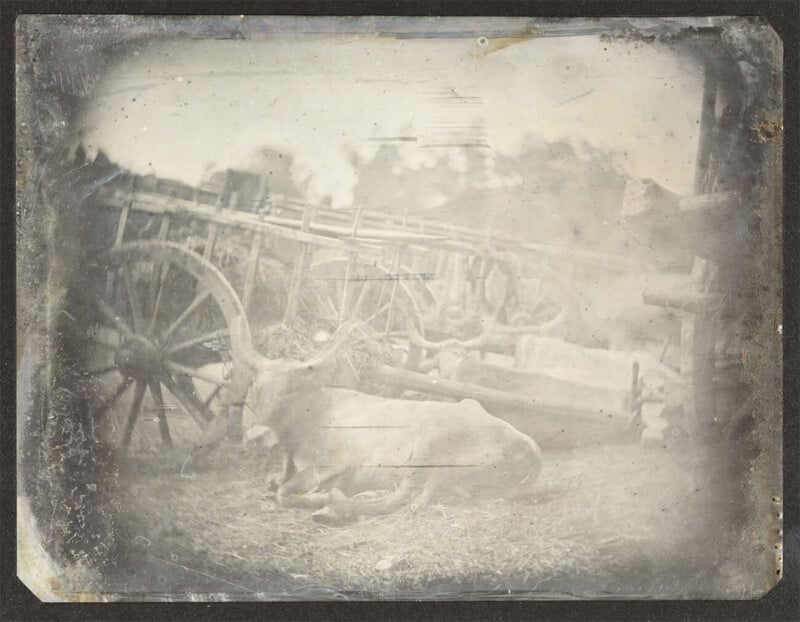
Beyond famous historical figures and livestock, dogs also enjoyed the benefits of Daguerreotype photography. The anonymous wiry pooch couldn’t sit still enough for their portrait but surely tried their best.
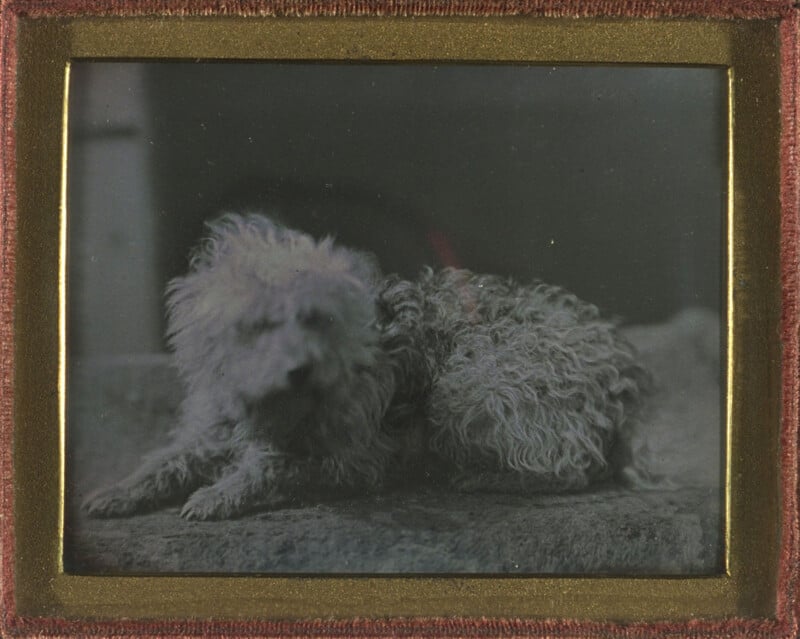
The internet loves cats, and Harvard University believes the earliest known photo of a live cat was made as early as the 1840s. The Daguerreotype below shows cats in their most authentic spirit — being a bit uncooperative.
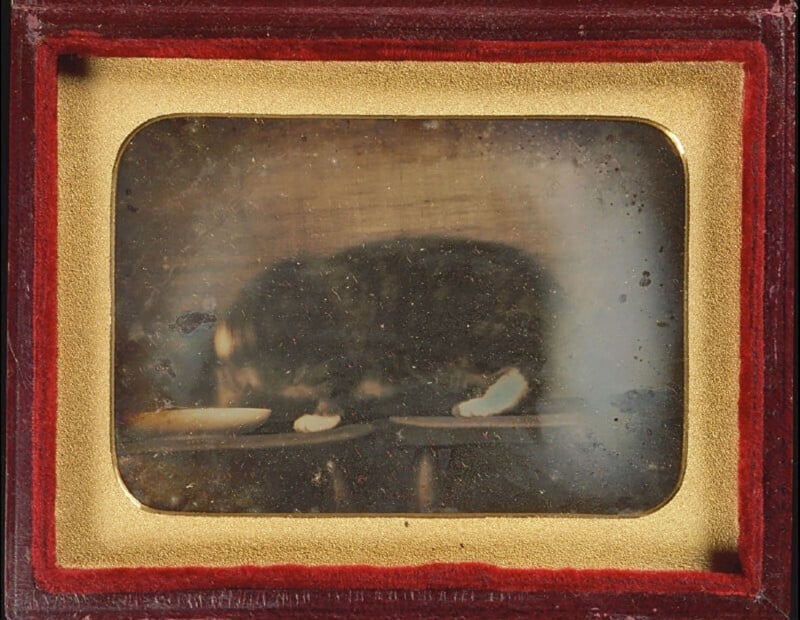
Hardened Cat Looks Tough as Nails in His ‘Cabinet Card’ Moment
Like many technological advancements, cameras and even photographs themselves underwent the “make it smaller” phase of progress. In the 1860s, “the cabinet card became the next big photographic trend,” explains Quinn.

These were the precursor to the wallet-sized photos that so many schoolchildren are all too familiar with. The cabinet card was designed to be easy to share and show. The thin paper was coated with egg white to create an albumen print. The clever technique has fallen out of favor, but this cat portrait is timeless.
Stereoscopic Pet Portraiture
Stereo photography took off in the 1850s, and of course, people wanted to capture their beloved furry friends in pseudo-3D.
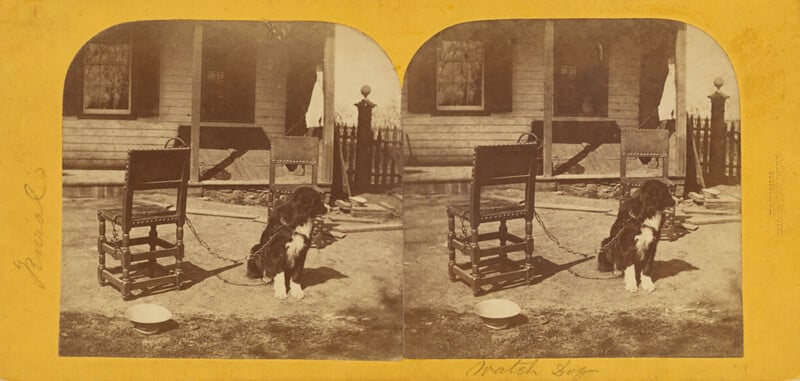
Turning Pet Photography Into a Business
In Brighton, England, photographer Harry Pointer (1822-1889) was likely the first to turn pet photography into a full-blown profession. Like Old Batchelor seen above, Pointer’s cabinet, or carte-de-visite, photos focused solely on cats.
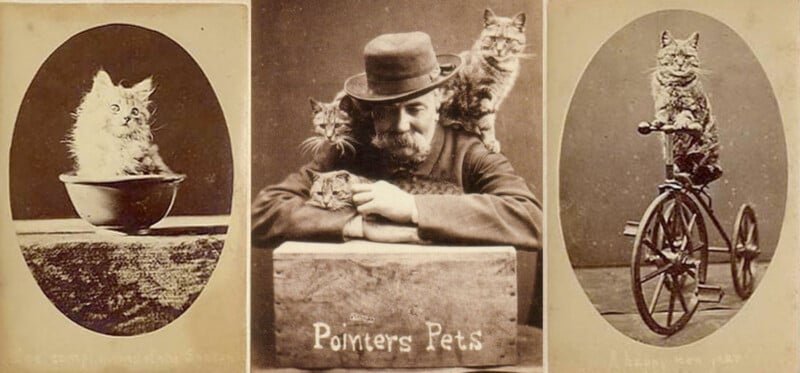
The Unconventional Career of Harry Whittier Frees
While Pointer purposefully got involved in photographing pets, Harry Whittier Frees fell into his unconventional career through serendipity.
The American photographer, born in 1879 in Pennsylvania, put a paper party hat on a family cat as a joke. In perhaps the most critical moment of his career, Frees took a quick photo of the feline. People loved it, and he was soon taking more pictures of animals in humorous poses and costumes.
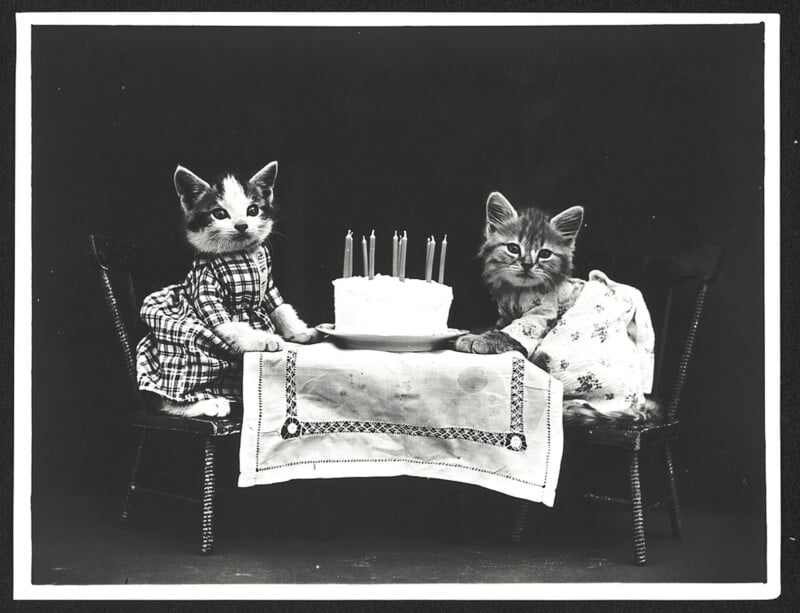
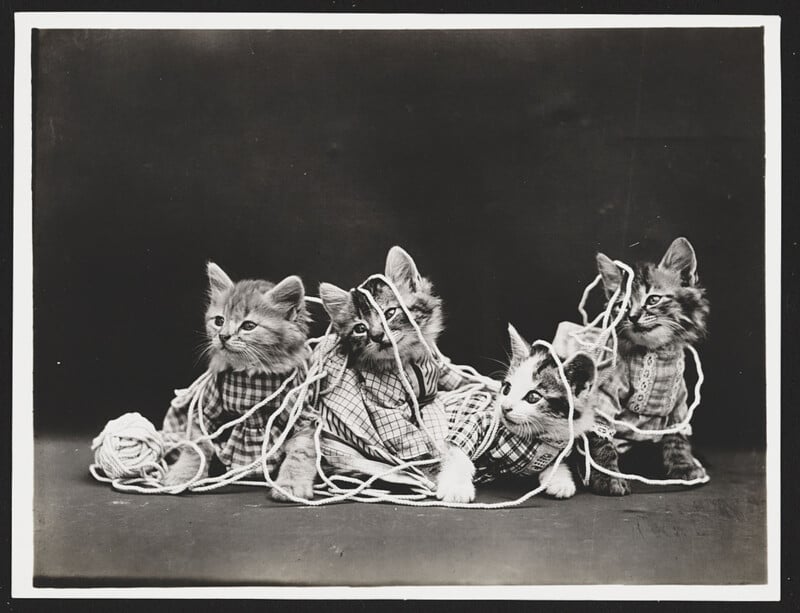
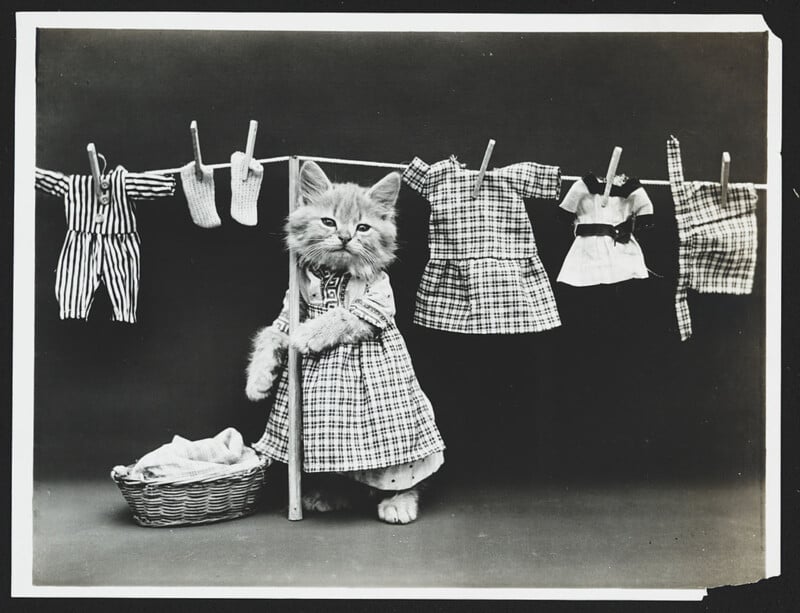
He made his living creating novelty postcards, selling prints, and taking pet portraits for magazines and books.
It wasn’t all fun and games, though. Frees once said that taking the portraits, which involved stiff costumes and posing mechanisms, was so stressful and challenging that he could only work for three months of the year. It’s easy to imagine it was much more stressful for the subjects.
Improving Camera Technology Gave Rise to Snapshot Photography
As cameras improved, enabling shorter exposure times and cheaper materials, more people could take pictures. And like so many photographers today who pick up their first digital camera, early 20th-century photographers tested their newest equipment on their pets.
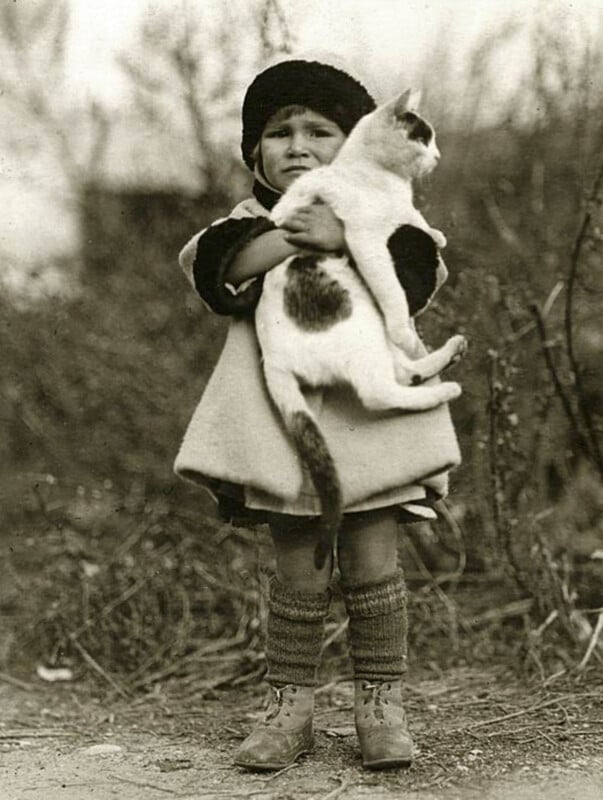
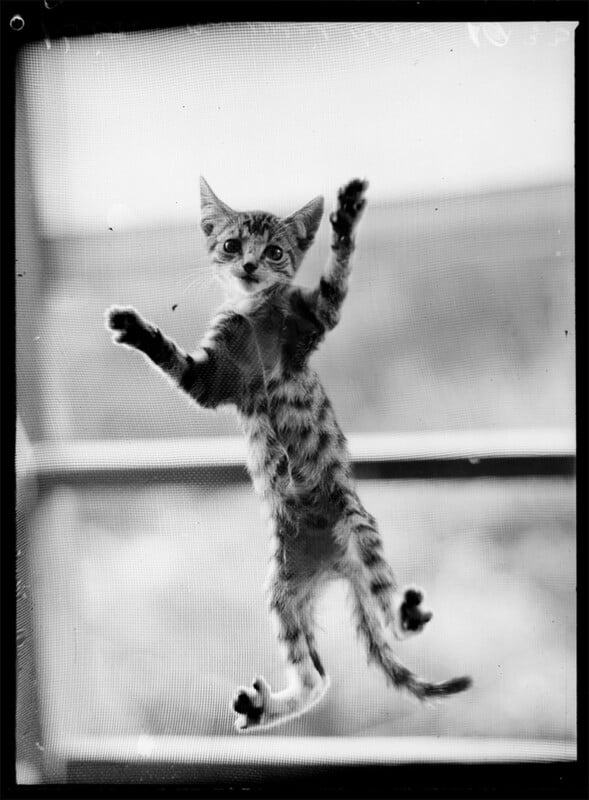
The History of Photography Itself Lives Through Pet Portraits
While nearly 200-year-old photos of people, famous or not, move the needle for people today, pictures of animals are timeless. Pets are always there for us, and because they’re there and we love them, they are the perfect subject for every photographer. Whether developing a photographic technique like Talbot or Daguerre, making a living, or just trying to make people smile, photos of animals have been an integral part of photography since its earliest days.
Image credits: Featured image courtesy of the National Science and Media Museum in England. The museum is currently closed for renovations, although its website remains active. The museum will reopen this summer.